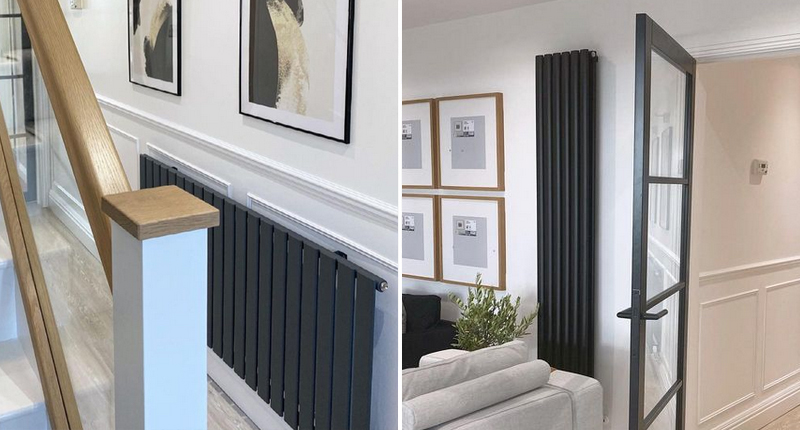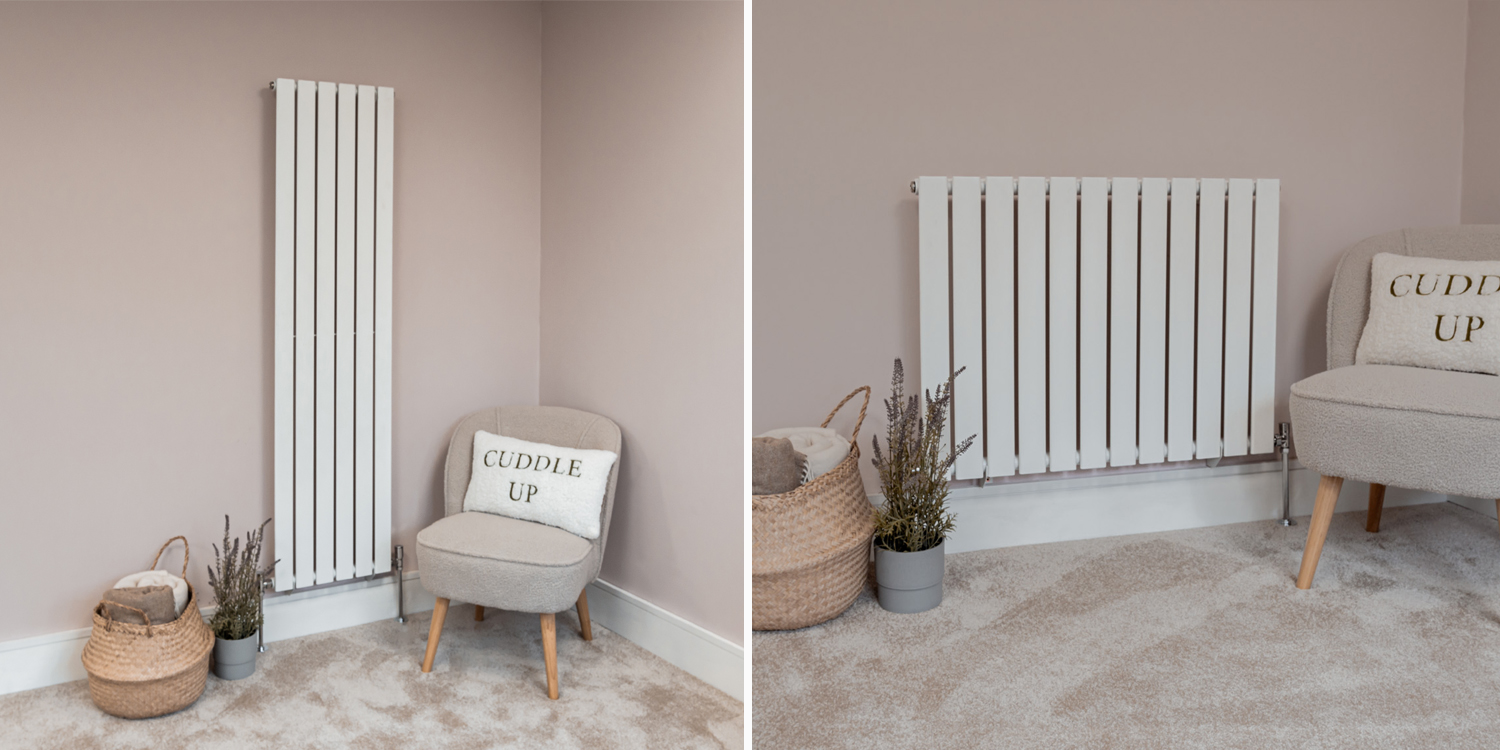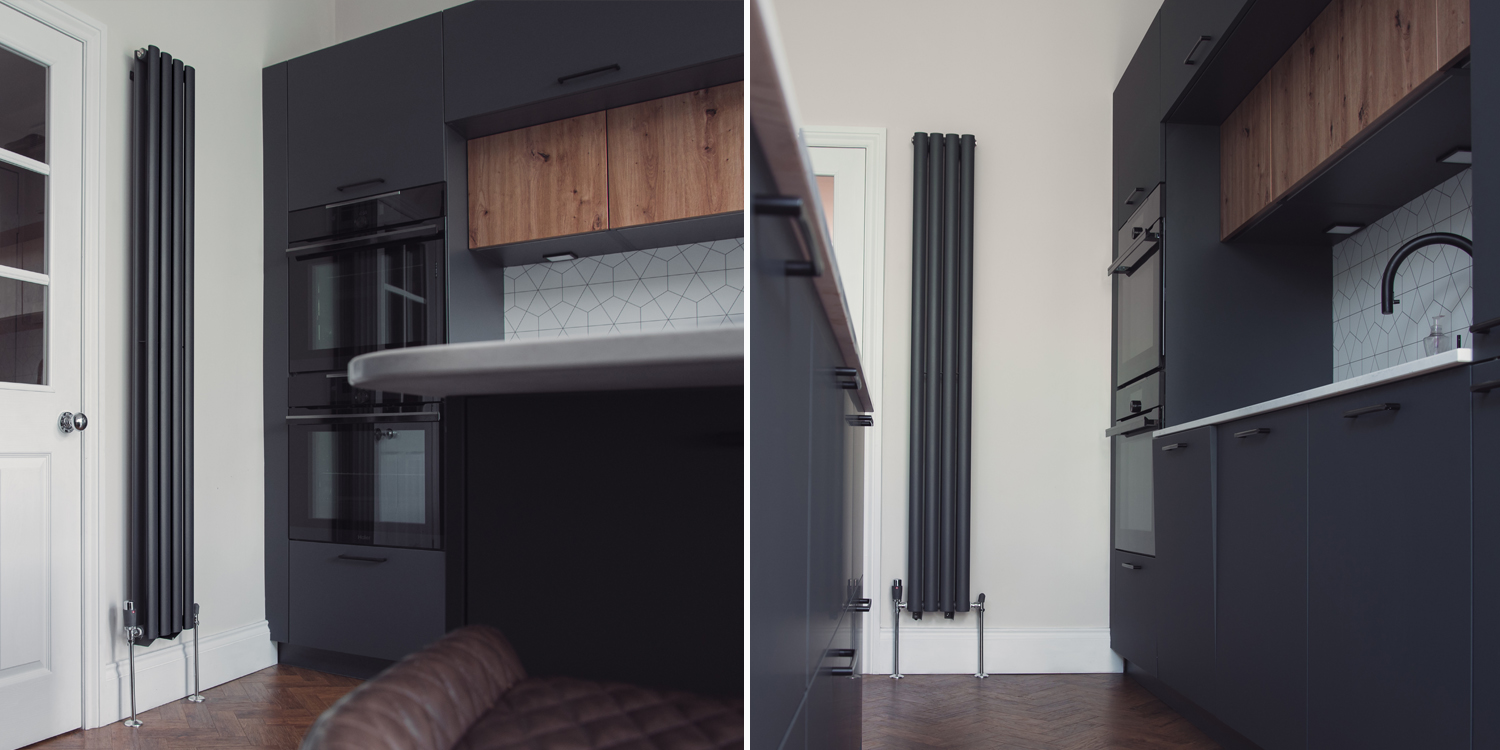- Designer Radiators
- Traditional Radiators
- Bathroom Radiators
- Wall Radiators
- Cheap Radiators
- Valves & Accessories
- Electric Radiators
- Underfloor Heating
- Bathrooms
-
CAN WE HELP YOU?
0845 860 5908


When choosing a new radiator, efficiency is often at the forefront of decision-making. Vertical radiators are increasingly popular thanks to their sleek appearance and space-saving design, but there’s a common question among homeowners: are vertical radiators less efficient than horizontal ones?
To understand whether vertical radiators are less efficient, it’s important to know how radiators work. Radiators don’t generate heat through electricity (unless they’re electric models!) but instead circulate hot water from the central heating system. This hot water heats up the metal surface of the radiator, which then radiates heat into the room.
Radiation – where heat radiates outward from the surface of the radiator.
Convection – where cold air is drawn in at the bottom, heated and then rises to circulate through the room.
The principle that hot air rises (convection) is a key factor when comparing vertical and horizontal radiators. Does this fundamental aspect of physics mean one design is less efficient than the other?
The most noticeable difference between the two types of radiators is their shape and orientation. Horizontal radiators, the more traditional choice, are typically wider and shorter, often installed under windows to counteract heat loss. Vertical radiators, on the other hand, are tall and narrow, making them ideal for rooms where wall space is limited.
However, when it comes to heating efficiency, the comparison between vertical and horizontal radiators depends on more than just their design. Both types can deliver the same level of heat output if they are correctly sized for the space.

The short answer is no. While it’s true that vertical radiators distribute heat slightly differently, this does not inherently make them less efficient than horizontal radiators. The key lies in the BTU output and correct sizing.
Horizontal radiators are better at distributing heat across a room because of their width. They draw in cooler air at floor level and allow it to rise evenly across a broader surface area, warming the room efficiently.
Vertical radiators, due to their narrower design, focus their heat output over a smaller area. The air at the lower sections of the radiator is warmed first and as it rises, the air at the top of the radiator is already hot, potentially slowing down the convection process slightly. However, modern vertical radiators are designed to overcome this, ensuring excellent performance.
Where the radiator is placed plays a significant role in its overall efficiency. Horizontal radiators are often installed under windows, but they can be obstructed by curtains or furniture, which blocks the flow of heat. This can reduce their overall effectiveness.
Vertical radiators, on the other hand, are less likely to be blocked due to their height and slim design. They can be installed on narrow walls, between windows or in awkward spaces, allowing for more flexibility and fewer obstructions.
The most critical factor in radiator efficiency is the BTU (British Thermal Unit) output. As long as the radiator’s BTU output matches the heating requirements of the room, the radiator’s orientation becomes largely irrelevant. A correctly sized vertical radiator will heat a room just as effectively as a horizontal one.
Beyond their efficiency, vertical radiators offer several practical and aesthetic advantages:
One of the biggest benefits of vertical radiators is their ability to make the most of limited wall space. In smaller rooms, hallways, kitchens or bathrooms, wall space is often at a premium. Vertical radiators can fit neatly on narrow walls or unused corners, freeing up valuable space for furniture and fixtures.
Unlike horizontal radiators, which are typically confined to spaces under windows, vertical radiators offer more flexibility. They can be installed almost anywhere in a room, making them ideal for modern homes with unusual layouts or large windows.
Vertical radiators are often chosen for their appearance as much as their functionality. Available in a wide range of colours, finishes and designs, they can add a contemporary touch to any room. For homeowners looking to make a style statement, vertical radiators can even double as decorative features, seamlessly blending into modern interiors.
Many vertical radiators are designed with additional features, such as integrated mirrors for bedrooms and bathrooms or towel rails for kitchens. This dual functionality can enhance the practicality of your radiator while saving even more space.
While radiator orientation does play a minor role in heat distribution, overall efficiency depends on several other factors:
Correct sizing: The radiator must be the right size for the room it’s heating. Use a BTU calculator to determine the heat output required based on the room’s dimensions, insulation,and window size.
Material: The material of the radiator affects how quickly it heats up and retains heat. For example, aluminium radiators heat up quickly and are highly efficient while steel radiators retain heat well and are durable.
Room insulation: Poor insulation can reduce radiator efficiency, regardless of its orientation. Ensuring windows, walls and doors are properly insulated will help retain heat and improve overall performance.
Heating system performance: The efficiency of your central heating system, including the boiler and pipework, will directly impact the performance of your radiators. Regular maintenance is essential to ensure optimal heat distribution.

Room layout – does the room have limited wall space or awkward corners? A vertical radiator may be the perfect solution.
Heat output – use a BTU calculator to ensure the radiator meets the heating requirements of the room.
Aesthetic preferences – vertical radiators offer a sleek, modern look, while horizontal radiators may suit more traditional spaces.
Budget – both vertical and horizontal radiators are available at a range of price points, with designer options offering additional features and finishes.
The belief that vertical radiators are less efficient than horizontal ones is largely a misconception. While horizontal radiators may have a slight edge in heat distribution due to their shape, modern vertical radiators are designed to deliver excellent performance and meet the heating demands of any space.
Ultimately, the key to efficient heating lies in choosing the right radiator for your room’s size, layout and insulation levels. Whether you opt for a vertical radiator to save space and add style, or a horizontal radiator for traditional placement, ensuring the correct BTU output will guarantee a warm and comfortable home.
Shop our wide range of affordable vertical and horizontal radiators, designed to combine style, functionality and efficiency.